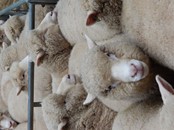Out of season breeding
 Out of season breeding
Out of season breeding
Sheep and goats that live in temperate climates are seasonal breeders, with the onset of reproductive activity triggered by shortening daylength.
In the UK the Poll Dorset/Dorset Horn is well known for being an aseasonal breeder, capable of breeding out of season, with lambing frequently taking place in September and October.
At Signet we are interested in the genetic influences upon seasonal breeding and are greatful to Liz Nabb for completing a comprehensive mini-project on the seasonality of reproduction as part of her AHDB funded PhD.
Liz concluded that
- There is a global economic demand to exploit the naturally long breeding season of some sheep breeds
- Much of the existing research into the genetic basis for aseasonality in small ruminants has focused on the MTNR1A gene, but the outcome measurements and experimental designs vary greatly between different studies
- More recent genomic analysis indicates that aseasonal breeding ability is polygenetic
- Aseasonal breeding ability has a low heritability
- Ewe estimated breeding values based on fertility rate during a spring mating period have been successfully used to increase productivity in an autumn lambing flock
- The selection of ewes for aseasonal breeding ability has no apparent detrimental effect on other productivity measures
- The majority of lambing events in the Signet dataset for UK Dorset sheep occurred in September, October and November but this was heavily influenced by a small proportion of flocks contributing a large number of records
- September, October and November lambing events should be considered ‘out-of-season’ for the purposes of developing an estimated breeding value for aseasonal breeding
- Almost all Signet recorded Dorset flocks recorded lambing events both out of season and in season but the proportion of lambing events falling into each category varied widely from flock to flock
- UK Dorset breeders do not currently submit details of unsuccessful mating opportunities to the Signet database, which would severely limit the accuracy of sire estimated breeding values based on the existing dataset
Click here to access her report